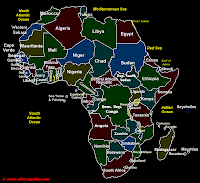Here in Canada, a Royal Bank report suggests that Canadians are tightening their belts so they can handle rising consumer prices particularly for gas and food -29.5 per cent and 4.2 per cent in May respectively. Although this is nowhere near the 240 per cent increase in food prices seen in Somalia in the last month, it's nonetheless quite significant.
It comes as no wonder then, that some comments about the East African drought are less than pleasant. From relatively reasonable readers calling on rappers to give up their bling and feed their kin, to “oh not again, haven't we been feeding them long enough already”, to “if they can pop out so many kids they should have the means to feed them”, to the downright ignorant who say that those people should "put everything on their credit card like we do here and pay it off later".
The catastrophe and its consequences then gets on the news lineup yet can’t quite make the headlines. The rare times the story leads, it involves some Westerner, head or spokesperson of this or other NGO addressing a news conference regarding the drought.
 |
| Map of Africa Courtesy of Africaguide.com |
But to be fair, there are lots of Good Samaritans out there including the Somali community here; MDs, “Friends of Somalia”, and Canadian Somali youth have been actively involved in raising funds or sending help any way they can to their countrymen in Africa.
With all due respect, I acknowledge the many factors that have brought the situation to where it is today. War/insecurity, an endemic cycle of poverty, corruption, mismanagement and misappropriation of funds particularly by local governments and the biggest one in this case the failure of rain. Simply put, these agriculturalists and nomadic pastoralist communities rely mainly on rain, and it has barely rained in the last two years.
So what has brought about this donor apathy? Here is what I think: It's just been so many years of donating without show of good result. The truth is, there is lots of good/positive result, but you have to be on the ground to see it. The failure of the media and the strategy of NGOs to mainly only air desperate images, continues to feed the society with the wrong image, an image of people who are endemically needy.
Donors rush to aid people and countries affected by natural disaster. But in this case, the disaster is clouded over by insecurity and a war that has gone on too long. Meaning that people see it as a disaster brought on by human [in]action. The world has just about ignored Somalia for the last twenty years and there is no sign this will change any time soon.
Most importantly, donors in the West can now observe what is going on out there. Although there’s still a lot of ignorance about Africa, the internet and social media has tremendously helped the curious see beyond the cleanly edited mainstream media images. Some now know that Africa is made up of many countries – 54 including the new South Sudan. They also know that not all those people and nations are dirt poor. So what they and I want to know is: “Where is the rest of Africa?” What are they doing to ease the burden of hunger on their drought-stricken brothers and sisters?
Southern, West, North, Central and the rest of East Africa, could we see you act? You may not have much, but you could spare some to save lives, especially those of children who may not last till the next bag of corn arrives from abroad. After all, it’s you who teach the same children that “Charity begins at home”. Or does it?


